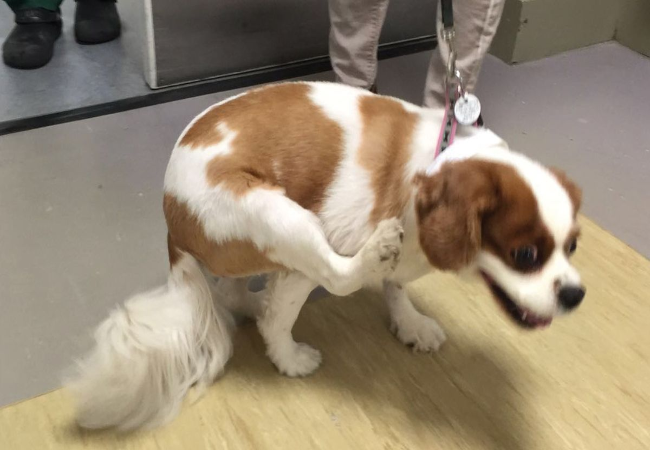Chiari‑Like Malformation & Syringomyelia in Dogs: Vet’s 2025 Guide to Pain, Diagnosis & Care 🧠🐾

In this article
Chiari‑Like Malformation & Syringomyelia in Dogs: Vet’s 2025 Guide to Pain, Diagnosis & Care 🧠🐾
By Dr. Duncan Houston BVSc
Hello—I’m Dr Duncan Houston BVSc, veterinarian and Ask A Vet founder. Chiari‑like malformation (CM), often genetic in toy and brachycephalic breeds, occurs when the skull is too small for the brain, blocking cerebrospinal fluid (CSF) flow. This leads to syringomyelia (SM)—fluid pockets within the spinal cord. These conditions cause pressure-related pain and neurological signs. This vet‑approved guide includes:
- What CM & SM are and why they develop
- Breeds at risk and typical ages
- Key clinical signs: phantom scratching, pain, gait changes
- Diagnosis with MRI and possible thermography
- Medical vs surgical treatment options
- Long-term outlook and quality-of-life care
- Ask A Vet tools for symptom tracking and management
1. What Are CM & SM?
CM is a congenital mismatch—too large brain vs. small skull—causing hindbrain herniation and backup of CSF into the spinal cord, which forms fluid-filled syrinxes—this is syringomyelia.
2. Who Is at Risk?
- Common in toy and brachycephalic breeds: Cavalier King Charles Spaniels (up to 95%), Chihuahuas, Pugs, Boston Terriers, Yorkies, Maltese, Brussels Griffons, Pomeranians, etc..
- Signs may appear between 6 months to 4 years, though asymptomatic cases are frequent.
3. Clinical Signs
- Phantom scratching – scratching in mid-air, often near neck/shoulder—no skin contact.
- Neck/head pain—yelping when touched, postural changes, reluctance to jump.
- Neurological deficits—ataxia, limb weakness, head tilting; occasional facial paralysis or seizures.
- Worsening with grooming, collars, heat, excitement, nighttime.
4. Diagnosis
- MRI is gold standard—shows cerebellar herniation and syrinxes.
- Thermography is emerging as non-invasive screening.
- Other diagnostics exclude ear disease, allergy, disc issues, or PSOM in Cavaliers.
5. Medical Management
- Pain relief: gabapentin, pregabalin, amitriptyline for neuropathic pain.
- Reduce CSF production: diuretics like furosemide, omeprazole.
- Anti-inflammatories: NSAIDs (carprofen, meloxicam) or short-term steroids.
- Complementary: acupuncture, physiotherapy.
6. Surgical Treatment
For severe, pain-refractory cases, foramen magnum decompression (FMD) removes skull/vertebral bone to restore CSF flow. ~80% improve symptomatically, though relapse possible in 25–50%. Titanium cranioplasty reduces rehemorrhage to <7%.
7. Prognosis & Long-Term Care
- SM is rarely fatal but can severely affect quality of life.
- Medical management allows good life for many, though lifelong medication is common and progression occurs in ~75%.
- Surgically treated dogs often improve long-term but require ongoing monitoring for relapse.
8. Ask A Vet Tracking & Support
- Log pain signs (scratching, yelping, posture) and neurologic changes daily
- Track medication schedules and side effects
- Record MRI/surgical dates, follow-ups, and imaging reports
- Receive alerts for temperature, exercise, or stress that may worsen signs
📌 Final Veterinary Thoughts
Chiari‑like malformation and syringomyelia can deeply affect a dog’s comfort and mobility. Early recognition—especially phantom scratching or neck pain—MRI evaluation, and tailored medical or surgical care greatly enhance quality of life. Ask A Vet tools support tracking, medication adherence, and symptom pattern awareness so you can partner proactively in your dog's care journey. 🐾❤️






